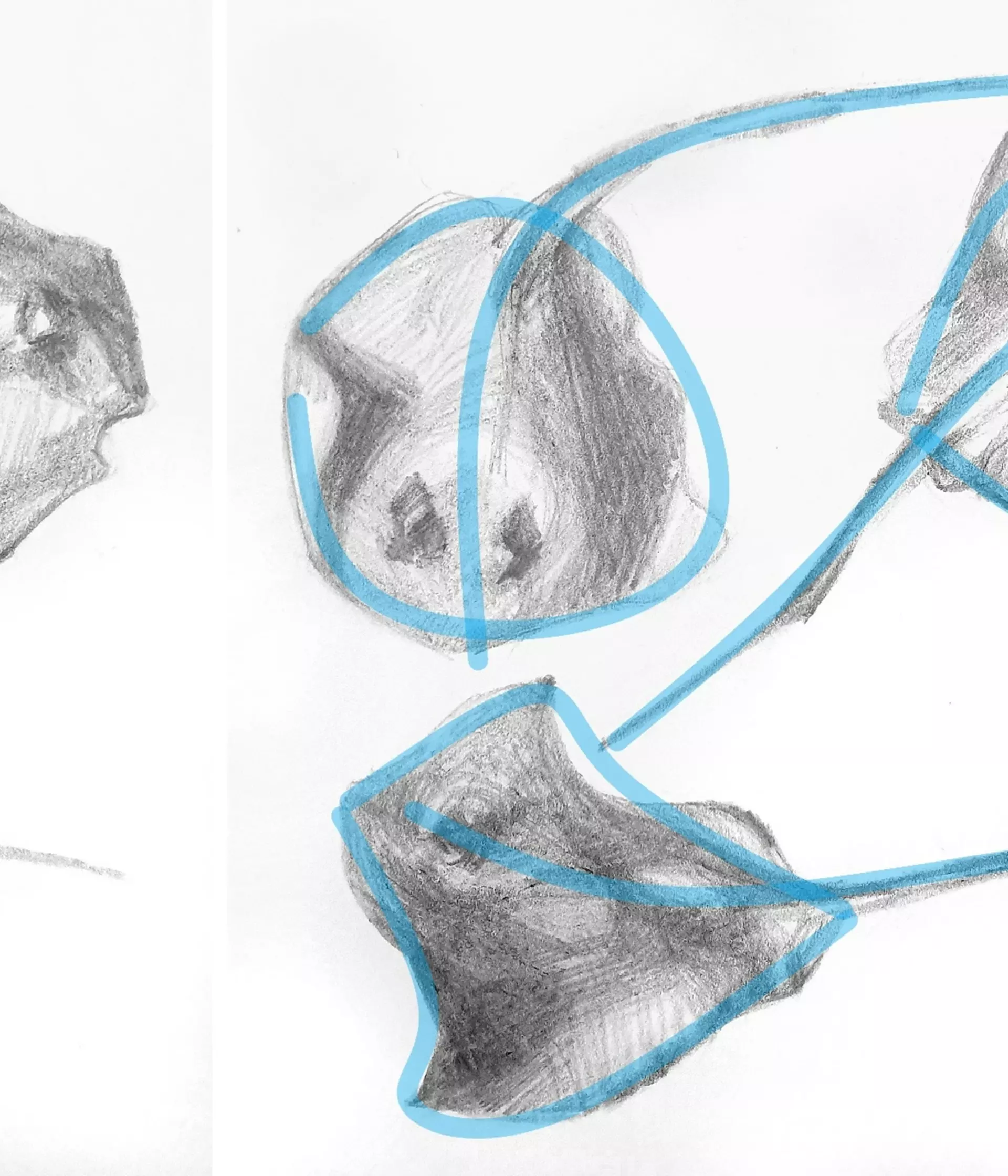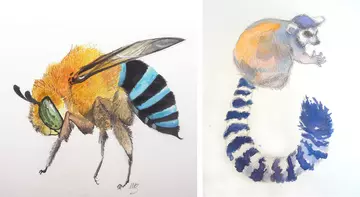
Dr Heidi Ma
Postdoctoral Research Assistant
The final post in the four-part series 'Creativity Unlocked: Exploring the art in science' by Heidi Ma, sharing tips on drawing and painting animals from an artist-scientist.
In this last article of the series, I will share some personal tips I have learnt from brilliant art teachers and by trial and error over the years. Animals are great models for art. As zoologists and nature lovers, we already have a fascination and love for animals, and many of us have the privilege to observe wildlife in their natural habitats.
Choose your subject and observe
The eye is as important as the hand in drawing and painting. For both artists and scientists, keen observation is a key skill. In art, practice will lead to hand-eye coordination and muscle memory. Working from photos can be less intimidating and allows you to work at your own time. Technology now allows us to take photos, record videos, with time lapse or in slow motion, crop and edit all at your fingertips using a smartphone. Life sketching can be more involved and sometimes even a bit stressful, but hugely rewarding. London and Whipsnade Zoos are familiar places to start, but museums are also great for practicing with inanimate subjects such as taxidermy and specimens.
Start with large shapes
Try to simplify the whole animal into a few parts. Use a few lines to capture the main geometric forms. Focus on getting the proportions right by observing the parts of the animal in relation to each other and to the whole animal. Are the legs about twice as long as the neck? Is the shoulder at the same height as the tail? Are the eyes set further apart than the ears? Looking for lines and angles helps me get the structure right – Are the angles acute or obtuse? Are the lines straight, or curved? Are curved lines convex or concave? Is there symmetry? Also apply these techniques when conveying light and dark, looking for shapes in highlights, dark tones, and shadows.

Details can be added later
Details are nonetheless important for conveying key characteristics of the animal, but they don't need to be added straightaway. These can be anything from patterns of the coat, and the shape of the antlers, to marks on the face, and how many toes and claws there are. Textures, such as scales, fur, and feathers can be conveyed in small areas in limited amounts, choosing where you want to focus on so they do not overwhelm the image. Less is more when indicating the essence.
Work in series for practice
Working on the same individual animal seen from different views, or multiple individuals in a group, helps me get familiar with the shapes, proportions, and colour palettes. Repetition is key to mastering techniques, while the slight differences require intensified observation, which also means there is no chance of boredom. It will also help you get to know your subject’s anatomy and movement better.
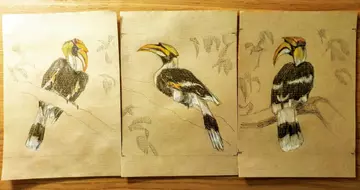
Try different materials
Get to know how all of your different materials they work. Pencils come in a gradient from soft to hard. Paper also ranges from smooth to textured, and varying absorption properties when applying different types of paint. Experience with many tools will allow you more flexibility in style. Don’t be afraid to get hands-on—I love the versatile and fluid qualities of charcoal and watercolour although they definitely can get messy.
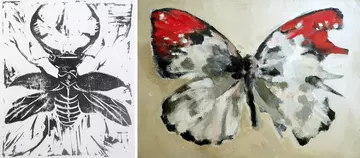
Experiment with viewpoint
You can do this by playing with size, scale, zooming in to focus only on one part, or taking a new perspective. For example, observing the face closely allows you to capture the mood of the animal – Is it alert, relaxed, or excited? Is it feeding, playing, grooming, or hunting? Silhouettes and shadows are also fun, and helps practice distilling the shapes of the animal down to what is most distinctive. Whether you work with microscope slides or drone imagery, there is always something visually interesting.
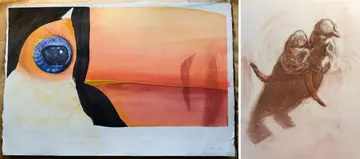
Actively seek inspiration
Bookstores, art supply stores, and museum shops are some of my favourites, and London has no shortage of them. The representations of animals in across cultures, throughout history, and made with spectacularly diverse styles and methods are fascinating to me. I am personally drawn to skeletons and fossils in natural history museums because they also provide interesting abstract shapes to experiment with. Animal forms are everywhere.
I hope this series on art and science has inspired you to get creative in the new year.
Final tip – stocking up on art supplies can enrich our lives over the coming months.
